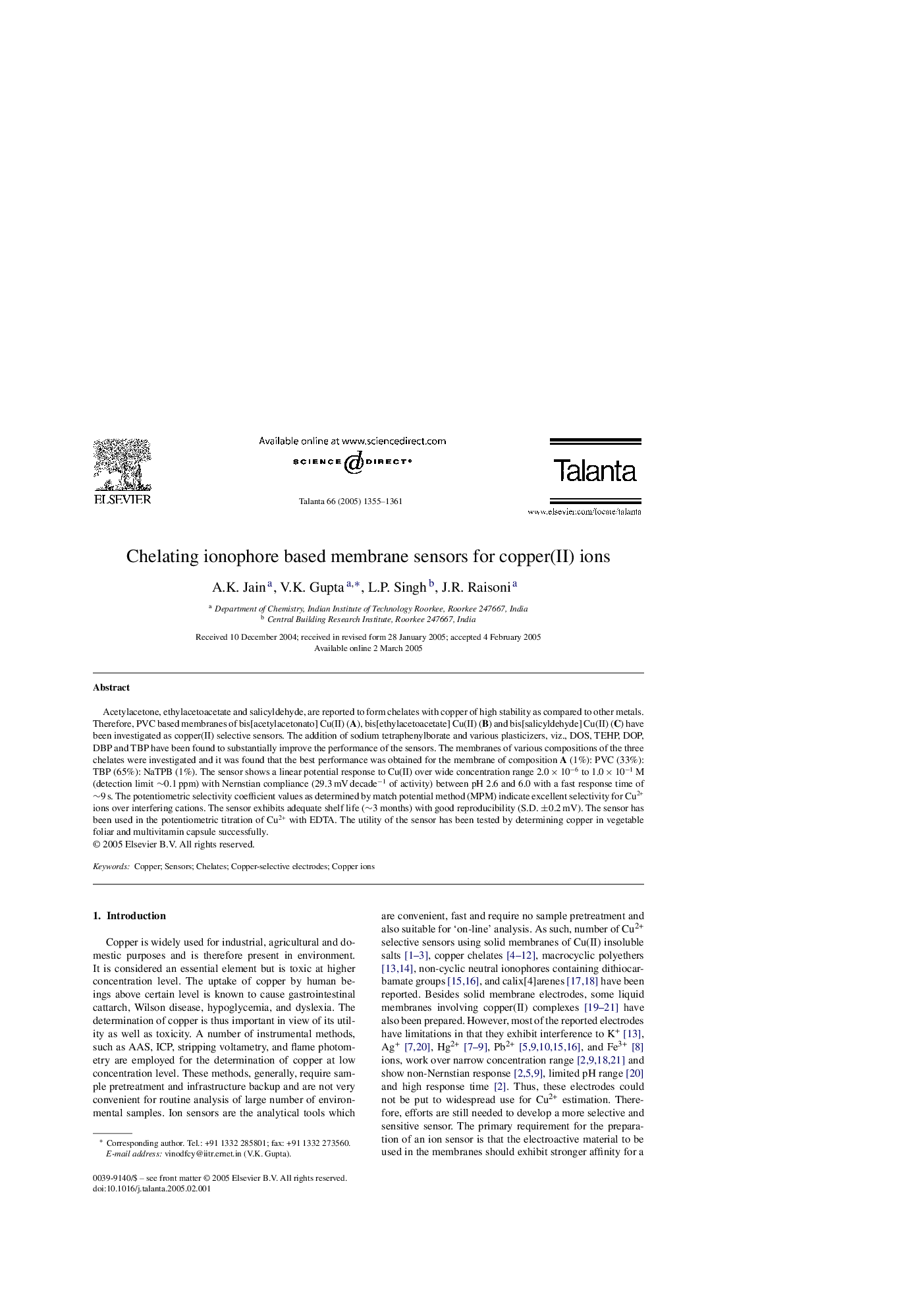| Article ID | Journal | Published Year | Pages | File Type |
|---|---|---|---|---|
| 10561242 | Talanta | 2005 | 7 Pages |
Abstract
Acetylacetone, ethylacetoacetate and salicyldehyde, are reported to form chelates with copper of high stability as compared to other metals. Therefore, PVC based membranes of bis[acetylacetonato] Cu(II) (A), bis[ethylacetoacetate] Cu(II) (B) and bis[salicyldehyde] Cu(II) (C) have been investigated as copper(II) selective sensors. The addition of sodium tetraphenylborate and various plasticizers, viz., DOS, TEHP, DOP, DBP and TBP have been found to substantially improve the performance of the sensors. The membranes of various compositions of the three chelates were investigated and it was found that the best performance was obtained for the membrane of composition A (1%): PVC (33%): TBP (65%): NaTPB (1%). The sensor shows a linear potential response to Cu(II) over wide concentration range 2.0 Ã 10â6 to 1.0 Ã 10â1 M (detection limit â¼0.1 ppm) with Nernstian compliance (29.3 mV decadeâ1 of activity) between pH 2.6 and 6.0 with a fast response time of â¼9 s. The potentiometric selectivity coefficient values as determined by match potential method (MPM) indicate excellent selectivity for Cu2+ ions over interfering cations. The sensor exhibits adequate shelf life (â¼3 months) with good reproducibility (S.D. ±0.2 mV). The sensor has been used in the potentiometric titration of Cu2+ with EDTA. The utility of the sensor has been tested by determining copper in vegetable foliar and multivitamin capsule successfully.
Keywords
Related Topics
Physical Sciences and Engineering
Chemistry
Analytical Chemistry
Authors
A.K. Jain, V.K. Gupta, L.P. Singh, J.R. Raisoni,
